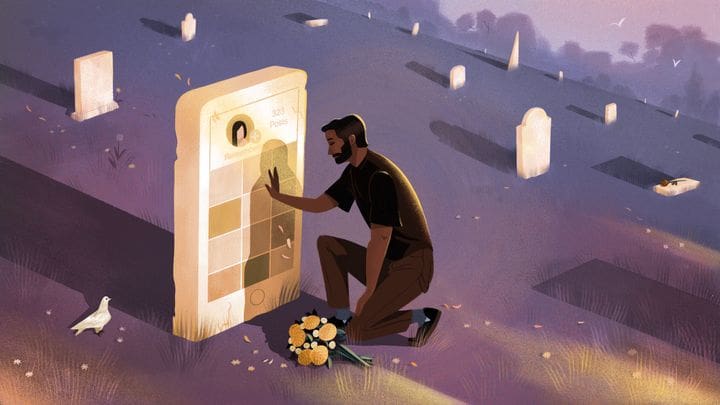In an era where our digital footprints intertwine with our physical existence, the concept of Digital Legacies has emerged as a poignant and vital aspect of our lives.
These legacies, composed of our online interactions, memories, and digital assets, have become as significant as our tangible inheritances. They represent our lasting impact and presence in the digital world, long after we’re gone.
Amidst the myriad of treatments for grief, there’s a story that stands out, one that intertwines the concepts of energy healing with the traditional grieving process. Sarah, a young artist, found herself engulfed in the depths of sorrow following the loss of her grandmother, a woman of spirited energy and love. In her quest to navigate through her bereavement, Sarah discovered a unique form of solace in energy healing. She began attending sessions that focused not just on the mind, but on the body’s energy centers. This approach, surprisingly, opened a new avenue for her to connect with the memories of her grandmother, allowing her to embrace her grief rather than stifle it.
Moreover, during these challenging times, it’s crucial to understand what not to do when grieving. For instance, John, a retired school teacher, found himself at a loss when his wife passed away.
The advice to “stay strong” and the societal expectation to quickly move on only intensified his pain. It was through a bereavement support group that John learned the importance of embracing his emotions. He realized that suppressing his feelings was counterproductive to his healing journey. In this group, he also learned about the significance of objects that help with grief.
He found comfort in his wife’s cherished book collection, which they had lovingly amassed together over the years. These books became a source of solace, reminding him of the shared joy and intellectual bond they had.

Sarah and John’s experiences highlight the essence of coping, cultivating empathy, and resilience in the face of loss. They both discovered that grief is not a linear process, and that finding personalized paths to healing is key. Furthermore, these narratives bring forth the concept of Digital Legacy and end-of-life care planning. In an era where our digital footprints are as significant as our physical ones, understanding and organizing our digital legacy becomes an essential part of end-of-life planning.
It’s about ensuring that our online lives, just like our physical ones, are treated with respect and care after we are gone. This holistic approach to grief and bereavement care opens up new possibilities for healing and honoring the lives we cherish.
Crafting Your Eternal Story: Embracing Digital Legacies in a Connected World
In the evolution of how we approach grief, digital tools and mobile applications are playing a transformative role. We are witnessing a paradigm shift with the emergence of Digital Legacy Planning Apps. In a world where our digital lives are as rich and encompassing as our physical ones, these applications offer an innovative way to preserve and honor the memory of our loved ones.
These digital platforms enable users to create, store, and manage their digital legacies with ease and security, ensuring that their digital memories and experiences are accessible for future generations. From photos and videos to important documents and personal messages, these digital legacies capture the essence of a life lived in the information age. As our relationship with technology continues to evolve, Digital Legacy Planning Apps not only transform how we handle our digital assets but also offer a new approach to end-of-life care, marking a significant milestone in how we experience and process grief in modern society.
As we navigate our lives in the digital age, the significance of Digital Legacies becomes increasingly apparent. It’s not just about preserving our online identities, but also about ensuring that our digital existence continues to tell our story, reflect our values, and resonate with future generations. Digital Legacy Planning Apps serve as custodians of our digital selves, offering a way to curate and safeguard our online memories, from social media footprints to personal correspondence. They provide a holistic approach to end-of-life planning, integrating our digital essence into the fabric of our everlasting legacy.

